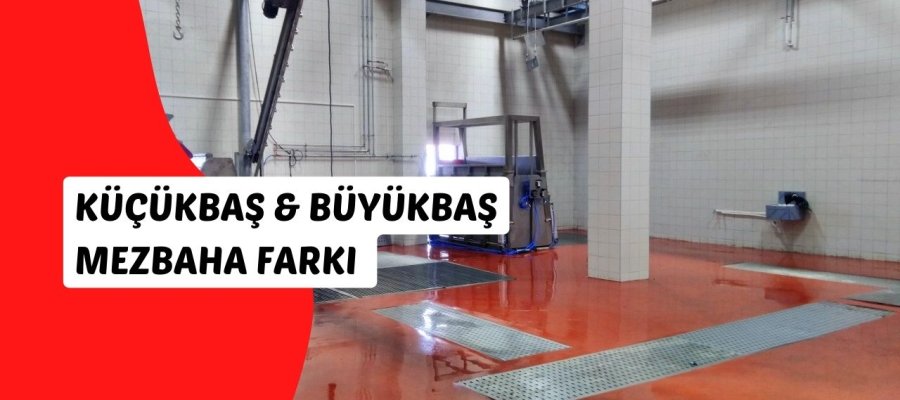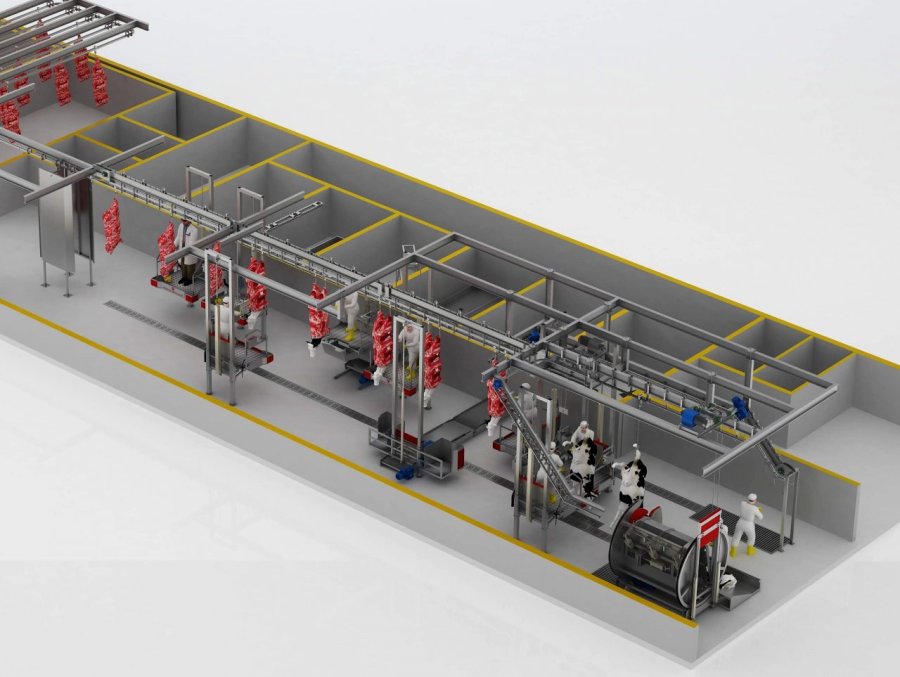
Small vs Large Ruminant Slaughterhouses: Which One Is Right for You?
Discover key differences between small and large ruminant slaughterhouses to guide your investment and slaughterhouse selection plan.
13 August, 13:08
Which One Is Right for You?
When planning to invest in a slaughterhouse, one of the first and most critical decisions you’ll face is choosing between a small ruminant slaughterhouse and a large ruminant slaughterhouse. Both have their own benefits, operational challenges, and investment implications. In this guide, we’ll walk you through the slaughter capacity differences, the practical applications, and how to make the right choice based on your business model.
Small vs Large Ruminants
Small ruminants typically include animals like sheep and goats, while large ruminants refer to cattle and buffalo. The choice of species directly affects your processing infrastructure, workforce needs, and overall slaughterhouse investment planning. A small ruminant slaughterhouse is generally more compact and requires less space and equipment compared to its large counterpart. This makes it ideal for regions with limited land availability or for startups looking for a lower initial investment.
The streamlined operations associated with small ruminants can help new businesses establish themselves more easily, reducing overhead costs while still enabling them to meet local demands. On the other hand, a large ruminant slaughterhouse demands higher capital but offers increased returns if you aim to process large volumes of beef or work within export markets. The economies of scale achieved by processing large ruminants can be substantial, enabling businesses to benefit from lower per-unit costs and greater market reach.
Slaughter Capacity Differences
One of the key factors in deciding between small and large ruminant processing is the slaughter capacity difference. Small ruminant slaughterhouses typically process more animals per hour due to their smaller size and faster handling time. This allows for a swifter turnaround, catering to the demand for lamb, goat, and other small ruminant meats. However, despite this higher throughput, the total meat output may still be lower compared to a facility that processes fewer but larger animals like cattle, which yield significantly more meat per individual animal.
Efficiency in your line is crucial. Understanding these capacity differences helps you determine which system aligns with your business goals. If your focus is on high volume, a small ruminant processing facility may be advantageous. Conversely, if you're aiming for greater weight per animal and potentially higher profit margins, a larger operation processing cattle might be more suitable. Ultimately, the choice between these systems hinges on the type of meat your business prioritizes and the specific market demands you aim to meet.
See also: liver hooks

Slaughterhouse Selection Guide: Key Factors to Consider
Market Demand is a crucial factor to consider when selecting a slaughterhouse. Understanding what type of meat is in demand in your target region—whether it be beef, lamb, or goat—can significantly impact your business's success. Aligning your operations with market preferences can help maximize profitability and sustainability. Next, Budget & Investment Planning plays a vital role in determining the feasibility of your facility. Can you support the higher infrastructure costs associated with a large ruminant facility? Evaluating your financial capacity will guide your decision-making process and ultimately influence the scale of your operations. Furthermore, Land Availability is essential for larger slaughterhouses, which require more space for waste treatment and logistics planning.
Ensuring that you have adequate land is critical to maintaining efficient operations and meeting regulatory standards. In addition, assess the availability of Skilled Labor. Do you have access to workers trained in processing either species? A skilled workforce is necessary to uphold quality and safety standards. Lastly, Regulatory Compliance cannot be overlooked, as different standards or certifications may apply for processing large versus small ruminants in your region, impacting both operations and market access.
Investment Planning Tips
Your investment planning strategy should align with your long-term goals. Understanding the nuances of your chosen industry is crucial for success. For example, small ruminant facilities often allow quicker returns on investment with lower startup costs, making them an attractive option for new investors. These facilities can quickly generate cash flow, allowing for reinvestment or expansion. On the other hand, large ruminant slaughterhouses, while more expensive to establish, offer scalability and higher profit margins if managed efficiently. The potential for larger production volumes can lead to significant profits, but this requires careful planning and execution. When developing your investment plan, make sure to consider not just the construction and equipment costs, but also the ongoing operational expenses. This includes labor, maintenance, and energy consumption, which can significantly impact your bottom line. A detailed budget that accounts for these factors will help ensure that your investment remains profitable over time.
Whether you choose a small ruminant slaughterhouse or a large ruminant slaughterhouse, success depends on clear goals, realistic budgeting, and a deep understanding of your local market. By evaluating the slaughter capacity differences and using a proper slaughterhouse selection guide, you can make an informed choice and plan your investment wisely.
See also: cattle stunner